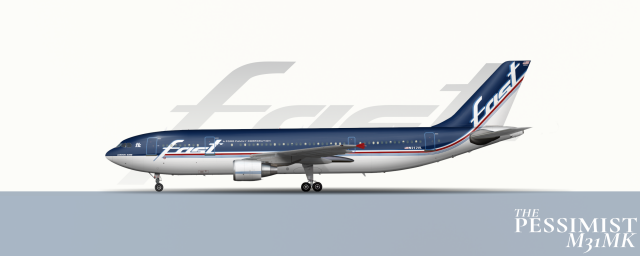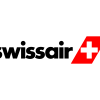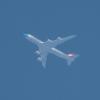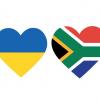
1986 Airbus A300-600
- Owner: ThePessimist (View all images and albums)
- Uploaded: Jan 19 2023 12:14 AM
- Views: 1,208
- Album Valiant Airways

Despite their early stumbles with the 747, FAST’s Lockheed fleet proved quite successful both in the transcontinental and transatlantic sectors. The extremely belated but large-scale success of the order was enough to convince Ford’s upper management that FFC and FAST management deserved whatever money they wanted to expand operations. This open cheque did not translate to continuous growth because FAST management of the late 70s embraced stability instead of growth. This was partly so that FAST could enhance the efficiency and customer experience of its existing operations. Whilst they had waited on the L1011 to finally be delivered, FAST management had redoubled their faith in Pratt & Whitney as the most desirable engine manufacturer. Further, FAST determined that a twin engine aircraft with similar characteristics to the L1011 would be extremely valuable for use on major trunk routes. Thankfully, a newcomer to the aircraft market had plans to develop an aircraft perfect to fill this nice. Europe’s floundering aerospace corporations had joined forces as Airbus to develop the A300, a twin engine widebody project. The company had struggled to find prospective buyers for the aircraft and one of the ventures they were exploring to sell more A300s was fitting the type with JT9D engines. FAST welcomed 5 A300B2-320s to the fleet. These new Airbus widebodies proved themselves to be even better than expected, which contributed to future FAST Airbus orders like the A300-600.
New aircraft were not the only upgrades FAST management made in the malaise years. Ford’s corporate profits fell in the late 70s and early 80s which put pressure on management to ensure that FAST made a profit. This set the stage for a major restructuring of FAST’s network. With it came the appointment of a new general manager of FAST operations, airline world superstar Kenneth Ray. Ray had originally worked in the dying days of the American passenger railroad but had since moved on to a series of smaller American carriers, all of which had been reorganized with an eye to streamlining operations. The first problem facing Ray was that the Jacksonville hub was a pit. The airport was crumbling and routes in and out the city were struggling to break even. It turned out that JAX was just too small to be a real hub. The Latin American sector was moved to Orlando but much of the capacity to Jacksonville was not replicated because it was going to be needed for new growth in the network under Ray's plan. Having dealt with the largest money loser, Ray was tasked with overhauling FAST’s most profitable sector: the Atlantic. From the introduction of the 707s, FAST had operated most of their European flights direct from their Detroit and Dulles hubs. However, this meant that much of the American east had to fly west across the country to Detroit just to then fly east across the Atlantic. This, Ray surmised, was a roadblock to expansion of European operations. Many other American carriers of the period developed partnerships with foreign airlines to direct traffic through certain hub cities. However, Ray planned to deviate from this common business practice by establishing a FAST owned European hub in Paris. Under the redesigned network plan, many European FAST flights would operate from various American hubs to Paris and then onward to other European cities. The most aggressive of Ray’s proposals recommended no less than nine different American airports which should receive direct FAST flights to Paris. Eventually, this number was pared down to seven airports as Chicago and New Orleans were deemed too competitive and low demand respectively but flights from Detroit, Boston, New York, Dulles, Orlando, Nashville, and Kansas City to Paris were all scheduled at a minimum frequency of 4 times a week. These flights then continued from Paris to a variety of destinations and most passengers would transfer from one FAST widebody to another at Paris for the final hop to their destination whether it be Dublin or Athens. Detroit and Dulles retained a small number of direct European flights to major cities other than Paris. FAST also signed contracts with a motley assortment of local carriers to operate under the newly established FAST Commuter brand and feed FAST’s new mini-hubs in Nashville and Kansas City. Planners believed that New York would have enough demand from the city itself that they believed that the city’s link to Paris would not require a feeder network.
The 1986 network realignment coincided with the introduction of FAST’s new for 1986 corporate livery which was extremely modern. The 80s livery, nicknamed the Rayserbeam, became an iconic sight, both in America and the skies above Paris. However, many analysts would later criticize the livery as a flashy cover for Kenneth Ray’s inherently flawed network overhaul. The 80s livery would indeed be the last designed for the FAST brand and the last to wear the FFC brandmark. The restructuring missed many relatively obvious issues. For one, the new route continued FAST and Valiant before it in the long tradition of neglecting the pacific market, but even more egregiously it pivoted away from the booming American market west of the Continental Divide. The original new FAST 1986 winter schedule had direct flights from Dulles and Detroit to Tokyo, Shanghai, and Honolulu as well as flights to Los Angeles, San Francisco, and Denver. No other flights even came within a stone's throw of the Pacific Ocean. Despite maximizing the efficiency of its new network with A300s, L1011s, and later new generation 737-400s and 300s on smaller domestic routes, the new network actually slowed growth. Having such a large presence in Paris required FAST to develop an expensive foreign base of operations. It also proved to be a headache for schedulers who needed to ensure all FAST flights arrived and departed Paris at almost exactly the same time so that passengers would have enough, but not too much time, to transfer between aircraft to arrive at their final destination.
It was not long after the restructuring of the carrier’s routes that cracks began to appear. FAST capitulated and bowed out of the New York route. It also inaugurated a new suite of transcontinental flights. FAST also ordered the 757-200 from Boeing to augment its 737s. Kenneth Ray was booted from the company in 1989. By 1990, the Nashville flight was no more and the Kansas City flight was on life support with only two weekly services. However, the rest of the airline was not doing much better. Unlike Ford’s previous cash injections, the network restructuring and Boeing narrowbody purchases had not broken even. The business environment was changing and Ford was no longer nearly as happy to be the lord of a small fiefdom of ancillary enterprises. The ambitions of the 60s had given way to the harsh business reality of the 90s and many of FFC’s core holdings had left the family. Rumors swirled that Ford would liquidate the FAST brand or at the very least sell it off to a different corporation who was more interested in running an airline.
[edit: forgot the FFC text]
[editer: Moved and slightly modified the engine stripes]
There is something odd but i can't describe it
very very nice . excellent job . I like it
It looks like a train brand and I mean that as a compliment.
very very nice . excellent job . I like it
Thank you so much.
It looks like a train brand and I mean that as a compliment.
Yeah it's certainly a little unusual. I think a gorgeous design but obviously designed by Ford's graphic design team who wear a lot of hats and don't usually work on aircraft liveries.
There is something odd but i can't describe it
this is horrible
Thanks for the constructive feedback
Dear ThePessimist,
Why is airline of yours call fast? Seems to be weird name. I like the plane.
Thank you,
Mr. Reginald L. Botha IV.
Dear ThePessimist,
Why is airline of yours call fast? Seems to be weird name. I like the plane.
Thank you,
Mr. Reginald L. Botha IV.
Thank you for your interest Reginald. FAST is the name Ford chose for what was formerly called the Valiant Air Division upon Ford's acquisition of the Valiant Holding Group. I'm glad you like the livery.

 Sign In
Sign In Create Account
Create Account
















this is horrible